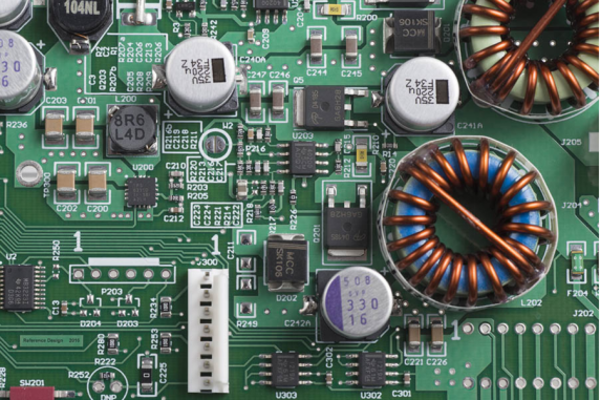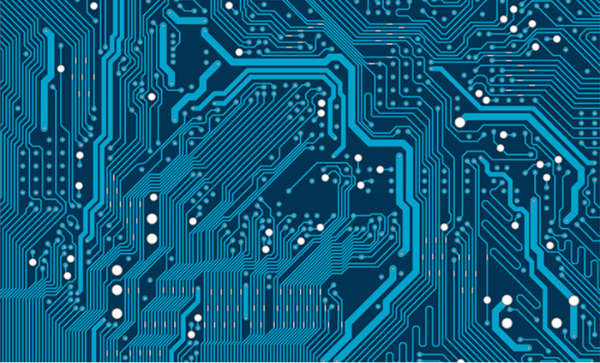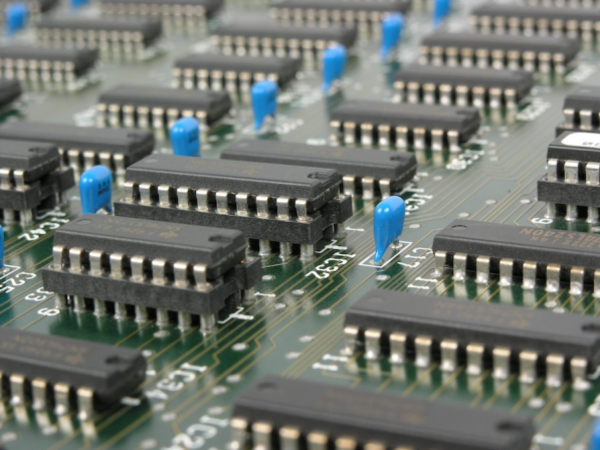
Today, printed circuit boards are indispensably associated with any electronic equipment. Probably most people who are hobbyists or professionally related to the embedded industry at some point are fed up with tangled wires and often problematic connections on breadboards, so he decides to design his own board.
Although modern PCBs are designed as multi-layer due to the pursuit of miniaturization and the need to meet strict standards, in the case of hobbyists, PCBs with two layers of copper are still in the lead, and we will focus on them later in this post.
At this point, it is worth noting that if your structure connected to the breadboard works flawlessly, then probably the connections in it are transparent to the signals in the system.
In this case, the only thing you need to worry about when preparing the layout is to prepare the schematic correctly and route the paths so that they do not burn up when you first run the layout.
However, if you want to design a system to meet EMC requirements, or you just want to apply a good design structure, then this post is just for you.
I've noticed that novice designers often think that the electrical resistance of the traces is only resistive due to their thickness and length. This statement is true, but only when the voltage and current flowing in them are constant over time.
For variable signals, and thus also digital signals, we must consider paths in terms of their impedance, which is the equivalent of resistance in AC circuits.
The whole thing can be summed up as a pattern - How to properly design a PCB on two layers

From school physics lessons, we probably all remember that the current will always flow along the path of least resistance. This applies to both the current flowing toward the load and the return current. The fact that the current must flow in a closed circuit is obvious but often forgotten.
And just as most budding designers run their signal paths with great care and aesthetics, giving them a solid return path is overlooked by them.
For DC flowing in the ground plane, this will simply be the geometrically shortest return path. Variable signals on the board will return along the path with the lowest impedance, and this for frequencies higher than 100 kHz will not always mean that it will be the shortest path in the geometric sense.
This will be a simplified circuit containing a microcontroller that feeds a fast-changing signal to the input of the buffer. Both ICs are placed on the top layer of the board, with a solid layer of the ground underneath them. Two return paths are marked in the picture below, one for DC and one for AC.
In the case of direct current, the charge flowing from the microcontroller output flows through the silicon structure of the buffer, then - through the via - returns to the ground plane, where it returns to the ground of our microcontroller via the shortest possible path.
While the circuit operates at a relatively high frequency (the 100 kHz quoted earlier is somewhat of an arbitrary limit), most of the return current is located directly under the signal path.
The successive capacitors in this circuit represent the capacitances between the infinitely short sections of the path and its reference plane. Inductance is the inductance of a conductive material depending on its geometry.
In practice, the values of both of these elements depend on the width of the path and its distance from the reference plane. The resistor symbolizes the accumulated resistance of the track.

A square wave front traveling in such a path charges the successive capacitors along its path, which leads to a displacement current, or current "flowing" through the capacitor.
Because the current wants to flow along the path with the lowest impedance, it will choose the path where the value of these capacitances will be as large as possible, so it will be directly under the path.
Any change in the value of these capacitances or inductances will result in a change in the impedance for our signal, and consequently, deterioration of its quality. If the trace would pass where there is a gap in the ground plane, we automatically introduce an impedance discontinuity into its circuit, increasing its inductance and the area of the return current loop.
This is a completely unacceptable situation, because the path routed in this way, due to the resulting loop, will emit much more disturbances and will become much more susceptible to disturbances from outside the system.
I would like to draw your attention to the fact that the frequency of a digital signal does not depend on its switching frequency but on the rise and fall time of the signal's edges.
For example, according to the datasheet of the Atmega328P microcontroller, the rise and fall time of signals in the SPI interface is typically 3.6 ns. This means that in a microcontroller clocked at 16 MHz, we are dealing with a bandwidth of about 97 MHz.
Although microcontrollers are powered from a DC voltage source, the current they consume is pulsed.
Therefore, it can be concluded that the current flowing in the supply paths is variable, so the path itself for this current must be considered in terms of its impedance, and not only resistance. Theoretically, it is best if such a path has impedance close to zero over the entire frequency range.
Providing such a path is one of the main tasks of the designer when preparing the layout of the board. Remember that any artifacts created in our power supply network will also be visible in the signals in the system.
The reactance expressed in this way, and thus the impedance of the capacitor, would tend to infinity as the frequency of the signal increases. Unfortunately, in the real world, we have yet to account for the parasitic components of the capacitor affecting its frequency response.
ESL is equivalent to series inductance and it depends on the type of leads of a given capacitor and the length of the path on the board between its electrode and the pin on which it is supposed to filter the voltage.
ESR is the equivalent series resistance. It depends on the type of dielectric from which the capacitor is made and on the frequency at which it operates. EPR is the resistance reflecting the DC leakage through the capacitor, and C is its rated capacitance.
On such a model, we can perform a simulation to check what its impedance looks like depending on the frequency of the signal.
Up to the frequency of approx. 5 MHz, the voltage regulator and capacitors accumulating charges located at the input and output of the regulator are responsible for maintaining the low impedance of the network.
Above this frequency, up to frequencies of several hundred MHz, it is the decoupling capacitors located at the power pins of the circuits that are responsible for providing a low impedance path for currents.

Therefore, the inductances resulting from the length of the leads must be as small as possible. In practice, it boils down to making the capacitor as close as possible to the pin whose power supply is to be decoupled. It is best to use surface-mounted components in the smallest possible housing that we can solder.
If we solder the board by hand, do not be afraid to insert vias into the ground at the soldering point of the capacitor.
Keeping the main impedance low is important because of the noise in the mains. Unless the impedance is low over a wide range of frequencies, the high-frequency harmonics of pulse current transients will generate noise and even voltage fluctuations throughout our grid.
On boards with more layers, usually, at least one of them is entirely devoted to the ground plane. Such a homogeneous copper spout not only provides a great return path for signals but also shields the traces above it and reduces the amount of interference emitted from our board.
Even with two-layer tiles, this is by far the best approach. Having such a solid plane, we will be able to provide low-impedance connections between the ground leads of integrated circuits and decoupling capacitors.
I have noticed that many people also pour ground into the empty spaces on the top layer of the board, thinking that this additional ground will better protect the signals. Even copper filling on both faces of the board is important for boards operating at high temperatures, as it will prevent the board from deforming and dissipate heat better.
If our structure will not be exposed to extreme conditions, it is better to leave only a homogeneous mass on the bottom of the tile.
An additional spout of mass on the top layer will not significantly improve the electrical parameters of our structure and may create additional problems that we will not be aware of.
Do not leave an unconnected ground between the signals paths - such a ground should be connected to the ground plane with vias located at a distance of 1/8 of the signal wavelength in the path. Otherwise, it may turn out that the ground left in this way increases the level of crosstalk between the paths.
If we have such a possibility, the space under high-speed integrated circuits on the upper layer should be reserved entirely for ground
If we design a board with analog and digital circuits, there is no need to share the ground plane. Since the return current of the high-speed digital interfaces returns exactly under the path, there is no way that it will interfere with sensitive analog signals.
An improperly divided ground plane can lead to the creation of an antenna, which will result in an increased level of emission from our board.
In the case of two-layer boards, it is best to reserve the bottom layer for the ground plane. I propose to use the entire upper layer for arranging the elements and making connections between them.
If it is necessary to cross two signal paths, a 0Ω SMD resistor can be used for this. If we want to miss a path by leading the signal through the bottom layer of the board, let's run it there by the shortest possible route and return with it to the upper part of the board.
The signal paths will have high impedance because they are far away from the ground plane, so they will pick up more noise. Therefore, keep the greatest possible distance between them.
There are many aspects to consider when designing a PCB. It is often a choice between various forms of compromise. In the article, I tried to briefly present, in my opinion, interesting and not very obvious phenomena that stand behind modern electronics and which can be successfully transferred to the field of hobby projects.
I realize that the issues presented in the article are only a drop in the sea of issues that you need to think about when designing a board. However, I believe that changing the way of thinking about the board and the phenomena occurring on it will always bring added value to our designs.
By continuing to use the site you agree to our privacy policy Terms and Conditions.
Recruit global agents and distributors Join us